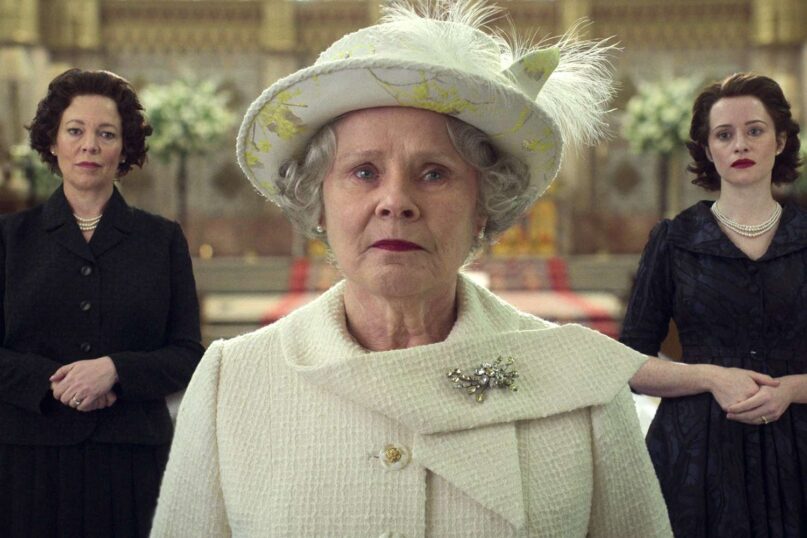(RNS) — Ever since childhood, I have had a thing for English history.
There was a time when I could recite the names of the kings and queens of England in precise chronological order. For that reason, it was natural that I would become a fan of the Netflix series “The Crown,” now in its final season.
But I discovered far more than English history in that series. It is an excellent mirror on certain aspects of the human condition and the way that families operate.
I always found the family dynamics of the House of Windsor to be particularly fascinating, which was enough to fuel my interest in “The Crown” (and I am quite aware that, at times, it took huge liberties with historical facts).
Years ago, I had the great privilege of studying with Rabbi Edwin Friedman, who brought a powerful understanding of family patterns into his work with churches, synagogues and other institutions. He taught his students that it is almost impossible to exorcise those family demons and that they show up, again, from “generation to generation.”
The House of Windsor is no exception.
In every generation, there is one member of the royal family who steps out and rebels, and becomes what Rabbi Friedman (and Gregory Bateson and family therapist Virginia Satir) called “the identified patient.”
Let’s start with the current generation and work backward.
The current rebel is, of course, Prince Harry — stepping away from his royal duties, if not out of the family circle altogether.
A generation before, there was Princess Diana, but also, the younger brother of King Charles, Prince Andrew, now disgraced because of his connections to financier and abuser Jeffrey Epstein.
A generation before that: Princess Margaret was a total rebel (and the episodes that featured her, especially as portrayed by Helena Bonham Carter, were among my favorites).
A generation before: King Edward VIII, aka David, the Duke of Windsor. Not only did he follow his heart and abdicate the monarchy, but he and his wife, Wallis Warfield Simpson, were Nazi sympathizers (a dark aspect in their life story that was also featured in “The Crown”).
And then, there was the anti-Nazi element to the Windsor story. I loved the episode that showed Prince Philip’s awkward reunion with his estranged mother, Princess Alice of Battenberg, who had become a nun in Greece.
The episode, alas, paid scant attention to the fact that she had saved the lives of Jews in Greece, was honored as one of the “righteous among the nations” and is buried in Jerusalem — a burial site that Charles, when he was still Prince of Wales, had visited.
If we are talking about “from generation to generation,” then it was possible that Charles was channeling his grandmother’s compassion when he became the royal patron of JCC Krakow, Poland, so ably run by my friend Jonathan Ornstein.
Why did Charles choose to support this wonderful institution? Simply out of a royal desire to help elderly Holocaust survivors.
Back to family dynamics: I was moved by Charles’ relationship with his great-uncle, Lord Mountbatten, aka “Dickie,” who was a close mentor to Charles and whose colorful life ended at the hands of IRA terrorists in 1979. In the aftermath of Dickie’s assassination, when Charles was grieving, his father, Prince Philip, emotionally reminds Charles that he has a father. It is clear that Philip is jealous of the outsized role that Dickie plays in his son’s life.
For me, the deep spirituality of “The Crown” happens in the final episode. (Spoiler alert, if you have not finished the series.)
Religion plays a key role: Check out the scene in which the leading Anglican prelates, especially the Archbishop of Canterbury, are hemming and hawing over whether they could approve the marriage of Charles and Camilla, even as the queen herself struggled with whether to offer her blessing.
There is also deep spirituality as the elderly Elizabeth and Philip review the plans for their eventual funerals. In an early scene, Elizabeth looks at the model soldiers that represent the troops that will march at her funeral. In another scene, she summons a bagpipe player to play a tune that she would want to be played at her funeral.
Elizabeth and Philip were already octogenarians when they reviewed those plans. But, as for me, being not quite 20 years younger than they are: What plans have I made for my eventual death — other than inheritance issues? Where will I be buried?
Those are sobering questions, and I have begun to float them with my closest friends. Do you ever think of dying? Do you know where you want to be buried?
And can I face those questions with the same kind of steely resolve that Elizabeth and Philip, at least in “The Crown,” presented?
In the final scenes, the aged queen encounters earlier versions of herself, played by the actresses who portrayed her over the years, and over the seasons of “The Crown.”
They ask her hard questions about her life. The last version of herself that she sees is the youngest — the fun-loving, happy-go-lucky Elizabeth who served her country during World War II.
I have often wondered, what would happen if the younger versions of me showed up for a conversation. If I could go back in time, and speak to those earlier versions of myself, what would I say to them?
That is a deep and heavy question, at least for me. I would want to go back in time and tell the clumsy, scrawny 10-year-old kid that, ultimately, it would all turn out OK.
As it did, nobly and elegantly, not only for “The Queen,” but also for the queen herself.






